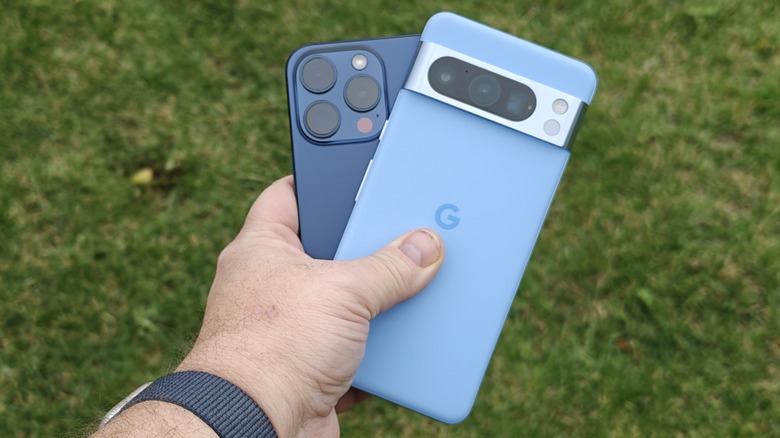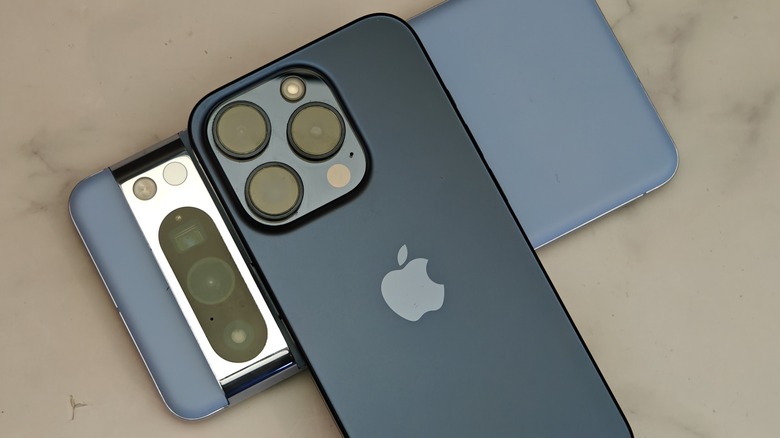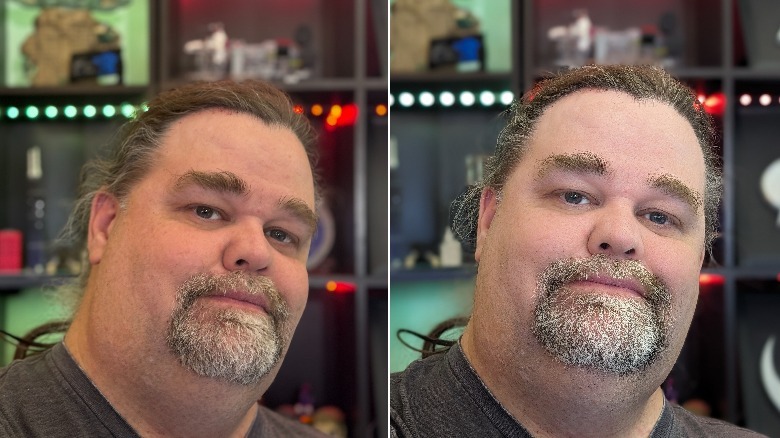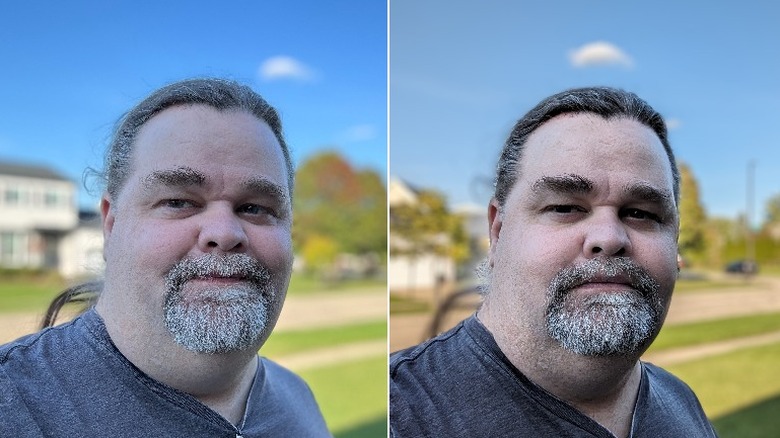Pixel 8 Pro Vs iPhone 15 Pro: Which Takes Better Portraits?
Portrait mode is a criminally underrated smartphone camera feature that can give your photos an extra bit of flair. It works by blurring the background behind the subject of your photo, giving you a sort of bokeh effect. Bokeh is the blurry background you get when you snap a photo with a longer lens, that focuses your attention on the subject of your photo. It's typically used when taking portraits of people, hence the name of the mode on your smartphone.
The trouble is that your smartphone doesn't have a long lens that it can use to create that blurry effect. Some camera sensors will allow you to get a nice bokeh effect when you're taking macro shots of tiny items like flowers. But when you're snapping a photo of a person it won't be as pronounced and likely won't quite give you the effect you're looking for.
That's where post-processing comes in. Using a mixture of data captured by your phone's camera sensors and some processing cycles, your phone can add the bokeh effect artificially behind your subject. The iPhone 15 Pro and Pixel 8 Pro both have two things going for them. First, both phones have terrific cameras. Second, both offer not only the ability to add bokeh to your photo, but they can both do it after you took the photo, whether you had that mode enabled or not.
Portrait mode, inside
We tested portrait mode on the iPhone 15 Pro and the Pixel 8 Pro to see which phone turned out the best portrait photos. For this test, we took a photo and then applied portrait mode after the fact. We looked at the bokeh effect in our test photos, but we also looked at the outline of the subjects. Aggressive bokeh can obscure things like stray hairs around a subject's head, so we looked at this as well. Here's how it turned out.
For this comparison, the iPhone 15 Pro photos are on the left, and the Pixel 8 Pro photos are on the right.
Our first photo set has our subject sitting at a desk inside with a busy background. This was captured with the front-facing selfie camera. The iPhone handles this quite well, with a smooth transition from the face to the blurry background. The Pixel, however, feels a bit more clumsy with aggressive blurring, especially around the hair on the left side of the head.
Turning the phones around to the main camera, there's a bit more of the same. Straggly hair on the left side of the Pixel shot trips up the blurring filter making part of the background clear. The iPhone in the meantime, blurred the whole kit-n-kaboodle, making a smoother transition from the foreground to the background. The winner here has to be the iPhone.
Portrait mode, outside
Once we head outside, we get a similar story. Google again gets pretty aggressive with the blurring and actually misses a bit just over the right shoulder and over the right side of the head. There's a faint line of clear background that's just a couple of pixels tall but still noticeable. Meanwhile, the iPhone makes a much smoother transition into the blurry background for an overall nicer effect.
Of course, that's a double-edged sword. Google's aggressive blurring negates a lot of the stray hairs around the head, while the iPhone leaves those plainly visible. When reduced and shared on social, the Pixel will produce a cleaner image.
When using the main camera, Google cleans things up a bit in that department. There's still a line along the right shoulder that shows the background while the iPhone manages to blend the background blur into the portrait more seamlessly.
Overall, the iPhone has a better portrait mode that makes the subjects and the background blend together rather than the hard transition you get from a Pixel 8 Pro. However, the photos produced by the Pixel are sharper and retain more detail than those shot by the iPhone, whose photos are almost a bit hazy by comparison. Neither phone is particularly bad.
The iPhone will give you better bokeh — closer to that of a high-end dedicated camera. The Pixel will give you punchier photos with more extreme contrast, resulting in portraits that feel like a better, more professionally finished product.





